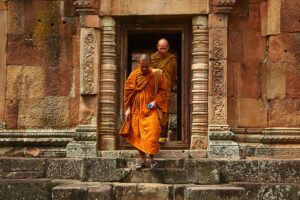Estimated reading time: 12 minutes
Key Takeaways
- Choose automatic 125cc scooters like the Honda Click 125i for the best beginner experience in Thailand
- Engine size matters: 125cc for solo city riding, 150cc for passengers or hilly terrain
- Always get an International Driving Permit before your trip – it’s required by law
- Inspect your rental bike thoroughly and take photos of existing damage before riding
- Book in advance during peak season (November-March) for better selection and rates
Table of Contents
- Why Your Choice of Motorbike in Thailand Matters
- The Great Debate: Automatic vs Manual Scooter Thailand
- Decoding Motorbike Engine Size Thailand
- Head-to-Head: 125cc vs 150cc Motorbike Rental
- So, Which Scooter to Rent in Thailand?
- Our Top 5 Picks: The Best Scooter for Tourists & Beginners in Thailand
- Renting Your Motorbike: The Essential Checklist
- Vital Riding Tips for Beginners in Thailand
- Ready for Your Thai Motorbike Adventure
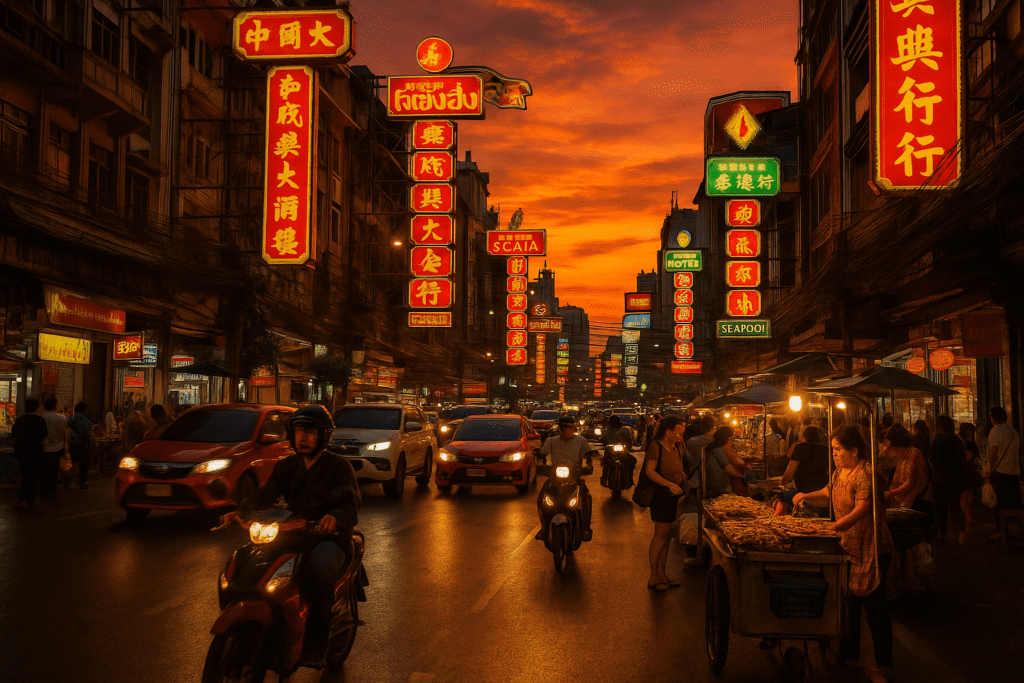
Picture yourself weaving through vibrant Bangkok streets at sunset, the city’s energy pulsing around you. Then imagine cruising along Koh Samui’s coastline, salt air in your face, hidden beaches calling your name. Or perhaps winding through Northern Thailand’s lush mountains, discovering that perfect viewpoint no tour bus could ever reach.
That’s the magic of exploring Thailand on a motorbike—it unlocks a sense of freedom that lets you dive deep into the country’s soul, from bustling urban adventures to serene countryside escapes. But here’s the thing: choosing the best motorbike for beginners Thailand isn’t just about grabbing any two-wheeled vehicle and hoping for the best. Your choice directly impacts your safety, comfort, and whether you’ll return home with incredible memories or stressful stories.
This guide will walk you through everything you need to know about renting the perfect bike for your Thai adventure. We’ll compare engine sizes, break down the automatic versus manual debate, and give you our top scooter picks so you can rent with complete confidence. Learn more about beginner-friendly motorcycles.
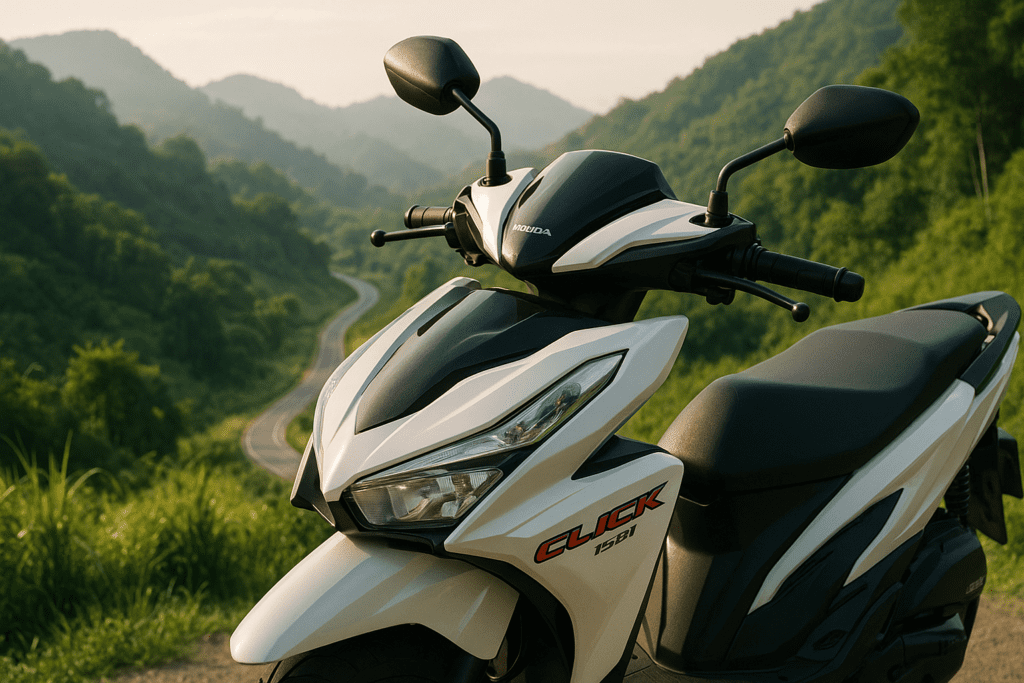
Why Your Choice of Motorbike in Thailand Matters
You might think any scooter will do, especially if you’ve ridden before. But Thailand’s roads present unique challenges that make your bike choice absolutely crucial.
Safety in Thai Traffic Comes First
Thailand’s roads are like a box of chocolates—you never know what you’re gonna get. One moment you’re navigating chaotic Bangkok avenues where traffic rules seem more like gentle suggestions, the next you’re climbing steep island hills where the road suddenly narrows to barely one lane. Then there are those rural surfaces that can go from smooth asphalt to questionable gravel without warning.
For new riders, especially those unfamiliar with Thai road culture, you need a bike that offers good maneuverability, lighter weight, and responsive brakes. These characteristics are essential for handling Thailand’s varied road conditions safely, allowing you to make quick stops when a tuk-tuk suddenly appears or navigate through tight spaces when traffic gets congested. For more in-depth safety strategies, check out our Top 10 Tips for Staying Safe While Riding a Motorbike in Thailand.
Building Your Confidence on Two Wheels
Here’s something most rental guides won’t tell you: a bike’s ergonomics can make or break your confidence, especially on unfamiliar roads. Seat height matters more than you’d think—if you’re on the shorter side and can’t plant both feet firmly on the ground at traffic lights, every stop becomes a minor stress test.
Lower seat heights help shorter riders feel secure and stable, which directly translates to better decision-maki ability in traffic. Upright ergonomics also reduce back and arm fatigue during longer rides, keeping you alert and comfortable whether you’re exploring for two hours or two days.
Your Wallet Will Thank You for Fuel Efficiency
Let’s talk money for a second. The daily rental rate is just the beginning—fuel costs add up quickly, especially if you’re planning to explore extensively. This is where smart bike selection really pays off.
Take the Honda Click 125i, for example. It’s renowned for excellent fuel economy and incredibly low running costs, making it a favorite among budget-conscious travelers who still want reliability and performance. When you’re getting 50+ kilometers per liter, those longer island explorations become much more affordable.
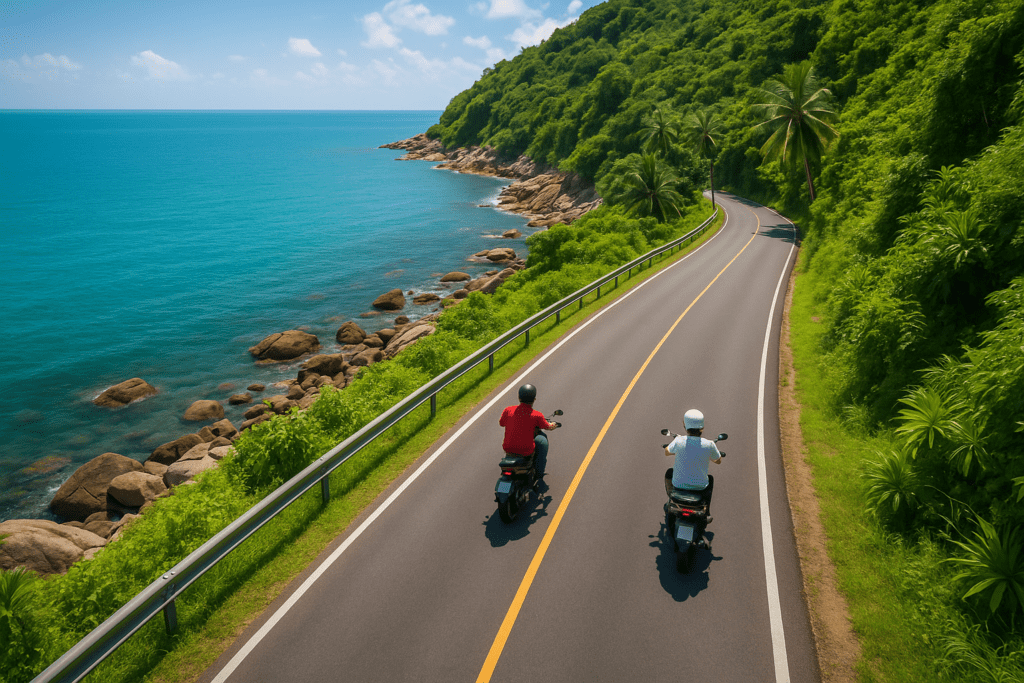
The Great Debate: Automatic vs Manual Scooter Thailand
This is probably the biggest decision you’ll face when choosing your ride. Let me break down both options without the sales pitch.
Automatic Scooters: The “Twist-and-Go” Champion
Automatic scooters operate on what’s called a “twist-and-go” transmission system. No clutch to operate, no gears to shift manually—just twist the right handlebar grip and you’re moving. It’s almost embarrassingly simple.
This simplicity is exactly why automatics are perfect for absolute beginners. Your brain isn’t juggling clutch coordination while trying to navigate unfamiliar traffic patterns. Instead, you can focus entirely on road conditions, other vehicles, and actually enjoying the scenery. The Honda Click exemplifies this perfectly with its gentle learning curve and forgiving nature for first-time riders.
Manual Motorbikes: For Control Enthusiasts
Manual motorbikes require you to use a hand-operated clutch (left handlebar lever) and a foot-operated gear shifter. Yes, it’s more complex, but it gives you direct control over the engine’s power delivery.
Some riders prefer this setup, especially for tackling steep, hilly terrain where you might want to engine brake down mountains or precisely control power delivery on challenging climbs. The trade-off? A significantly steeper learning curve that’s really not advisable for first-timers to tackle while simultaneously adapting to Thailand’s unique traffic culture.
The Head-to-Head Comparison
| Feature | Automatic Scooter | Manual Motorbike |
|---|---|---|
| Riding Comfort | High (no shifting) | Moderate (needs coordination) |
| Learning Curve | Easy | Challenging |
| Maintenance | Low | Moderate (clutch wear) |
| Rental Price | Usually cheaper | Occasionally higher |
| Ideal For | Beginners, city rides | Experienced, rural/mountain |
For most tourists, especially beginners, automatic is the clear winner. You’re here to explore Thailand, not master motorcycle mechanics.
Decoding Motorbike Engine Size Thailand
Engine displacement, measured in cubic centimeters (cc), determines how much power your bike produces. But what do these numbers actually mean when you’re trying to get up that hill to the Big Buddha?
The Common Engine Classes You’ll Encounter
100cc–110cc engines are the lightweights of the scooter world. They’re perfect for putting around small towns on flat terrain, but they’ll struggle with anything more demanding. Think of them as the bicycle-plus option.
125cc engines hit the sweet spot for most tourists. They provide enough power for city exploration and island hopping while remaining incredibly easy to handle and fuel-efficient. This is why so many rental shops stock primarily 125cc scooters—they work for 80% of tourists’ needs.
150cc engines step up the game significantly. The extra displacement translates to noticeably more power for tackling hills, carrying a passenger comfortably, or handling short highway stints between towns. If your plans include any two-up riding or mountainous regions, 150cc becomes the minimum recommendation.
What Engine Size Actually Affects in Real-World Riding
Power and Speed: Larger engines produce more horsepower and higher top speeds. A 125cc might top out around 90-100 km/h, while a 150cc can comfortably reach 100-110 km/h.
Fuel Consumption: Generally, larger engines use more fuel, though modern 125-150cc scooters remain remarkably economical. You’re talking about the difference between 55 km/l and 45 km/l—both excellent by any standard.
Hills and Loads: This is where engine size really matters. If you’re planning to carry a passenger or significant luggage, especially in mountainous regions like Northern Thailand, 150cc or larger becomes essential for safety and performance.
Head-to-Head: 125cc vs 150cc Motorbike Rental
Let’s get specific about the two most popular rental categories and help you make the final call.
The Case for 125cc: The Goldilocks Option
125cc scooters are ideal for city cruising, solo travelers, and exploring islands like Koh Samui or Koh Phangan. They offer the perfect balance of capability and efficiency for most tourist scenarios.
From a cost-benefit perspective, 125cc models typically provide the best rental value and superior fuel efficiency. You’ll save money both on the daily rental rate and at every gas station. For someone planning primarily urban exploration or short island hops, it’s hard to argue against a 125cc.
The Honda Click 125i remains the quintessential example—reliable, available everywhere, and perfectly suited for the majority of tourist riding needs.
The Case for 150cc: When You Need That Extra Oomph
150cc becomes the smart choice when you’re traveling with a passenger, carrying extra luggage, or your itinerary includes light highway travel or hilly terrain. The additional torque makes a dramatic difference in these scenarios—what feels sluggish and potentially unsafe on a 125cc becomes comfortable and confident on a 150cc.
Yes, you’ll pay slightly more for the daily rental, but that cost is easily justified by the improved safety margin and comfort when operating under heavier loads or more demanding conditions.
At-a-Glance Comparison
| Feature | 125cc Scooter | 150cc Bike |
|---|---|---|
| Power Output | ~8–11 hp | ~13–15 hp |
| Fuel Efficiency | 45–55 km/l | 40–50 km/l |
| Top Speed | 90–100 km/h | 100–110 km/h |
| Ideal Use | Cities, short trips | 2-up, hilly, longer |
| Daily Rent (avg.) | 150–250 THB | 200–350 THB |
So, Which Scooter to Rent in Thailand?
This is where we move from theory to practical decision-making based on your actual travel plans.
Ask Yourself These Key Questions
How long is your trip? A two-day Bangkok stopover has very different requirements than a three-week island-hopping adventure.
Are you traveling solo or with a passenger? This single factor might be the most important in determining your engine size needs.
How much luggage are you carrying? Larger scooters offer significantly more under-seat storage and better weight-handling capabilities.
What kind of roads will you be on? Stick to city traffic and you can go smaller and more maneuverable. Planning rural exploration or mountain visits? Size up.
What’s your daily budget? The 100-150 THB difference between engine sizes might matter on a longer trip.
Making the Decision Process Easier
Browsing a curated rental platform can simplify this entire decision-making process. For a hassle-free experience, platforms like Byklo.rent allow you to filter bikes by location, engine size, and type, helping you see all your options in one place and find the perfect match for your trip before you even arrive.
Our Top 5 Picks: The Best Scooter for Tourists & Beginners in Thailand
After considering all the factors we’ve discussed, here are our specific recommendations for different types of travelers.
1. The All-Rounder: Honda Click 125i (Automatic, 125cc)
Why it’s perfect: This is the gold standard for good reason. User-friendly operation, incredibly fuel-efficient performance, cheap rental rates, and available at virtually every rental shop in Thailand. If you could only choose one bike for tourists, this would be the best scooter for tourists Thailand. It handles everything from Bangkok traffic to Phuket beach runs with equal competence.
2. The Adventurous Beginner: Honda CB150 (Manual, 150cc)
Why choose this: For the confident beginner who wants more engagement with their riding experience. The extra power and manual transmission provide better control for rural exploration or short intercity rides. Perfect if you have some riding experience and want to tackle Thailand’s more interesting back roads.
3. The Budget-Friendly Choice: Yamaha Fino 125 (Automatic, 110-125cc)
Why it works: Stylish design, comfortable ergonomics, and very affordable pricing make this an excellent option for solo travelers on a tight budget. It’s particularly popular among first-time riders who want something that doesn’t look like a basic rental scooter.
4. The Premium Comfort Cruiser: Honda PCX 160 (Automatic, 150cc)
Why upgrade to this: The best choice for comfort during longer rides. Offers more power than smaller scooters, a significantly plusher seat, and substantially more under-seat storage space. Ideal for couples or anyone carrying more gear while maintaining automatic simplicity.
5. The Off-the-Beaten-Path Explorer: Honda CRF250L (Dual-Purpose)
Why consider it: For adventures that include unpaved roads and dirt tracks leading to remote waterfalls or mountain viewpoints. Note that it’s heavier, more expensive to rent, and really best suited for those with some prior riding experience. Not your typical tourist choice, but perfect for the adventure-focused traveler.
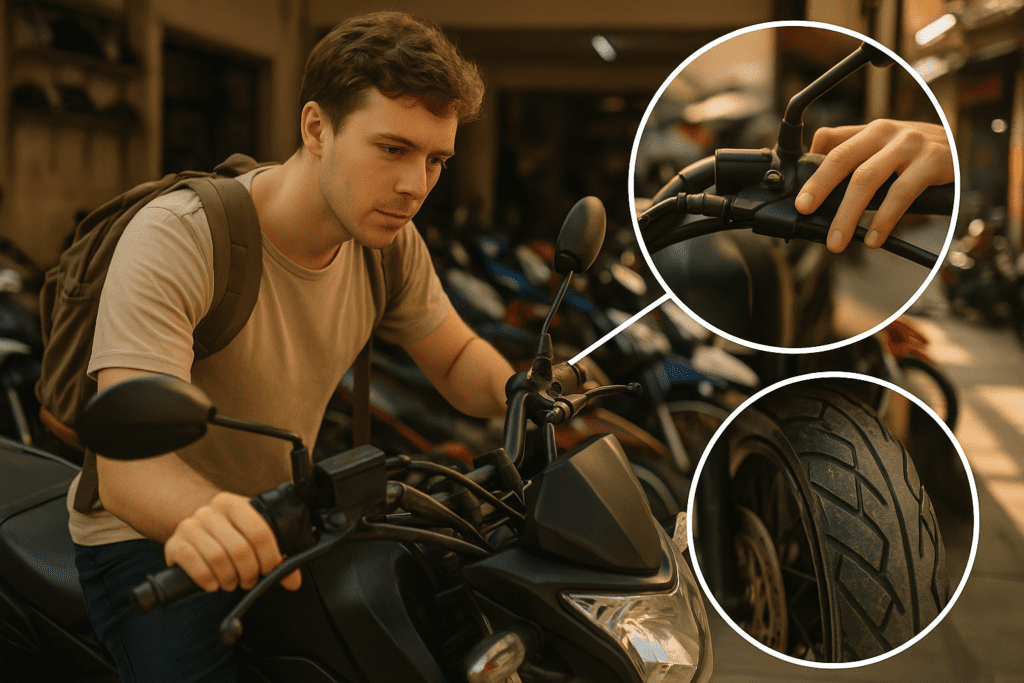
Renting Your Motorbike: The Essential Checklist
Now for the practical stuff that could save you major headaches and money.
Required Documents You Must Have
Passport: You’ll need this for identification. Here’s a crucial tip: many rental shops will ask to hold your original passport as a deposit. Resist this practice—offer a copy plus cash deposit instead. Losing your passport in Thailand is a bureaucratic nightmare.
Driving License: A valid license from your home country with motorcycle endorsement is required. Without this, you’re riding illegally regardless of what the rental shop tells you.
International Driving Permit (IDP): This is required by law for foreigners riding in Thailand and essential for any insurance claims. Get this before your trip—you cannot obtain an IDP while abroad.
Deposit and Insurance Reality Check
Deposit options: You’ll typically choose between a cash deposit (around 5,000 THB) or leaving your passport. As mentioned, cash is safer even though it ties up funds.
Insurance coverage: Basic insurance is not automatically included with most rentals. Explicitly ask about Collision Damage Waiver (CDW) and theft protection. Without these, you could face bills of 50,000+ THB for relatively minor damage.
Pre-Ride Inspection: Your Money-Saving Safety Net
Inspect the bike thoroughly before signing anything or handing over money. Your checklist should include:
• Brakes: Test both front and rear—they should feel firm and responsive
• Tires: Check for adequate tread depth and proper pressure
• Lights: Verify headlight, tail light, and turn signals all function
• Horn and Mirrors: Essential for safe riding in Thai traffic
• Engine sounds: Listen for any unusual noises when running
• Photo documentation: Take photos/videos of any existing scratches or damage
Before you commit, review our Motorbike Rental Thailand Guide for a detailed rental process and insider tips to ensure a seamless experience.
Vital Riding Tips for Beginners in Thailand
Safety gear and local knowledge can make the difference between a great trip and a disaster.
Essential Safety Gear You Can’t Skip
Helmet quality: Only use D.O.T. or ECE approved helmets. Many helmets provided by rental shops are essentially plastic decorations that offer minimal protection in an actual crash. Consider bringing your own or purchasing a quality helmet locally.
Protective clothing: Wear closed-toe shoes and gloves at minimum. Thai roads can have debris, and even minor falls result in significant road rash when wearing sandals and shorts.
Understanding Thai Traffic Culture
Remember the basics: Thailand drives on the left side. This trips up many tourists from right-hand traffic countries.
Practice defensive riding: Expect the unexpected and maintain constant vigilance. Thai road culture can involve sudden stops, erratic lane changes, and animals appearing on roadways. What seems predictable can change instantly.
Basic Daily Maintenance
Perform quick daily checks of brake function, tire pressure, and fuel levels. Report any mechanical issues to your rental company immediately—attempting fixes yourself usually violates rental agreements and can lead to additional charges. Read more about motorcycle safety in Thailand.
Ready for Your Thai Motorbike Adventure
Choosing the right motorbike transforms your Thai holiday from a standard tourist experience into something extraordinary. For most beginners, an automatic 125cc scooter like the Honda Click represents the best motorbike for beginners Thailand—offering the perfect balance of capability, safety, and affordability. Step up to 150cc when your plans include passengers, longer distances, or challenging terrain.
Book your motorbike in advance, especially during peak tourist seasons from November through March. The best bikes get snapped up quickly, and advance booking often means better rates and more choices.
Ready to start your adventure? Head over to Byklo.rent to compare models from trusted rental shops, check real-time availability, and book the perfect bike for your Thai journey with confidence. Adventure awaits!
Frequently Asked Questions
What is the best motorbike for beginners in Thailand?
The Honda Click 125i is widely considered the best motorbike for beginners in Thailand. It features an automatic transmission, 125cc engine that provides adequate power for city and island riding, excellent fuel efficiency (50+ km/l), and is available at virtually every rental shop across the country.
Should I choose automatic or manual scooter in Thailand?
For beginners, automatic scooters are strongly recommended. They use a simple “twist-and-go” system with no clutch or manual gear shifting required, allowing you to focus on navigating Thai traffic safely. Manual bikes require more coordination and experience, making them unsuitable for first-time riders dealing with unfamiliar road conditions.
What engine size should I rent for Thailand motorbike touring?
For solo city riding, 125cc is ideal. For two passengers or hilly terrain, choose 150cc minimum. The 125cc provides excellent fuel efficiency and sufficient power for most tourist scenarios, while 150cc offers the extra torque needed for carrying passengers or tackling mountainous regions safely.
Do I need an International Driving Permit to rent a motorbike in Thailand?
Yes, an International Driving Permit (IDP) is required by law for foreigners riding motorbikes in Thailand. You must obtain this before your trip from your home country – you cannot get an IDP while abroad. Without an IDP, you’re riding illegally and insurance claims may be denied.
How much does it cost to rent a motorbike in Thailand?
Daily rental costs typically range from 150-250 THB for 125cc automatic scooters and 200-350 THB for 150cc bikes. Prices vary by location, season, and rental duration. Advance booking during peak season (November-March) often provides better rates and selection.
What should I inspect before renting a motorbike in Thailand?
Always check: brakes (front and rear responsiveness), tire condition and pressure, all lights and turn signals, horn and mirrors, engine sounds for unusual noises, and document any existing damage with photos. This inspection protects you from being charged for pre-existing issues.


